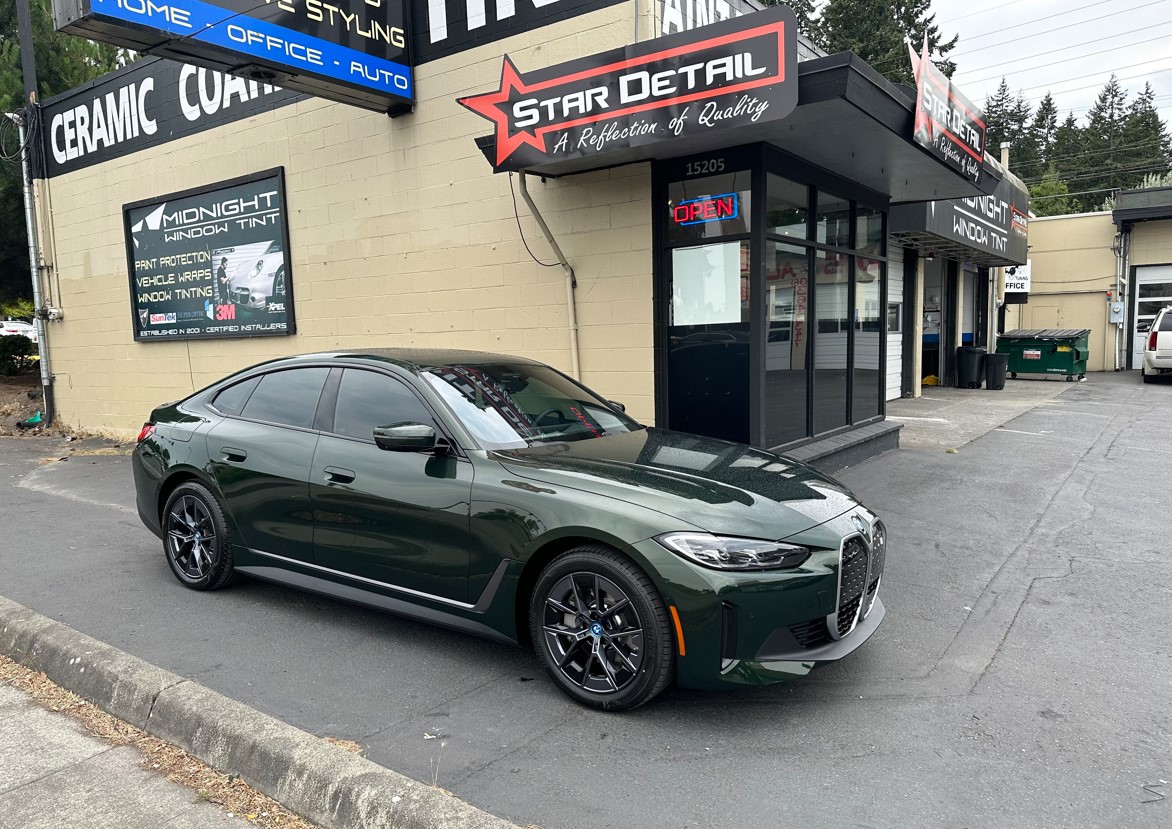
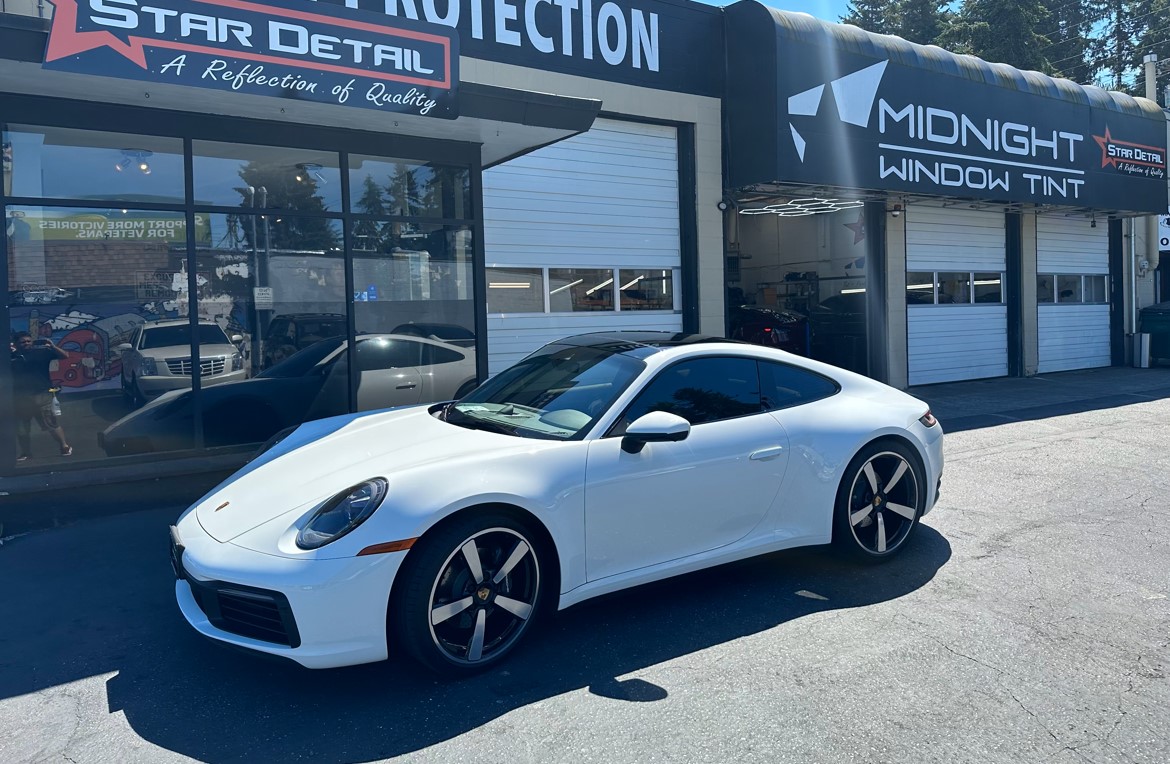
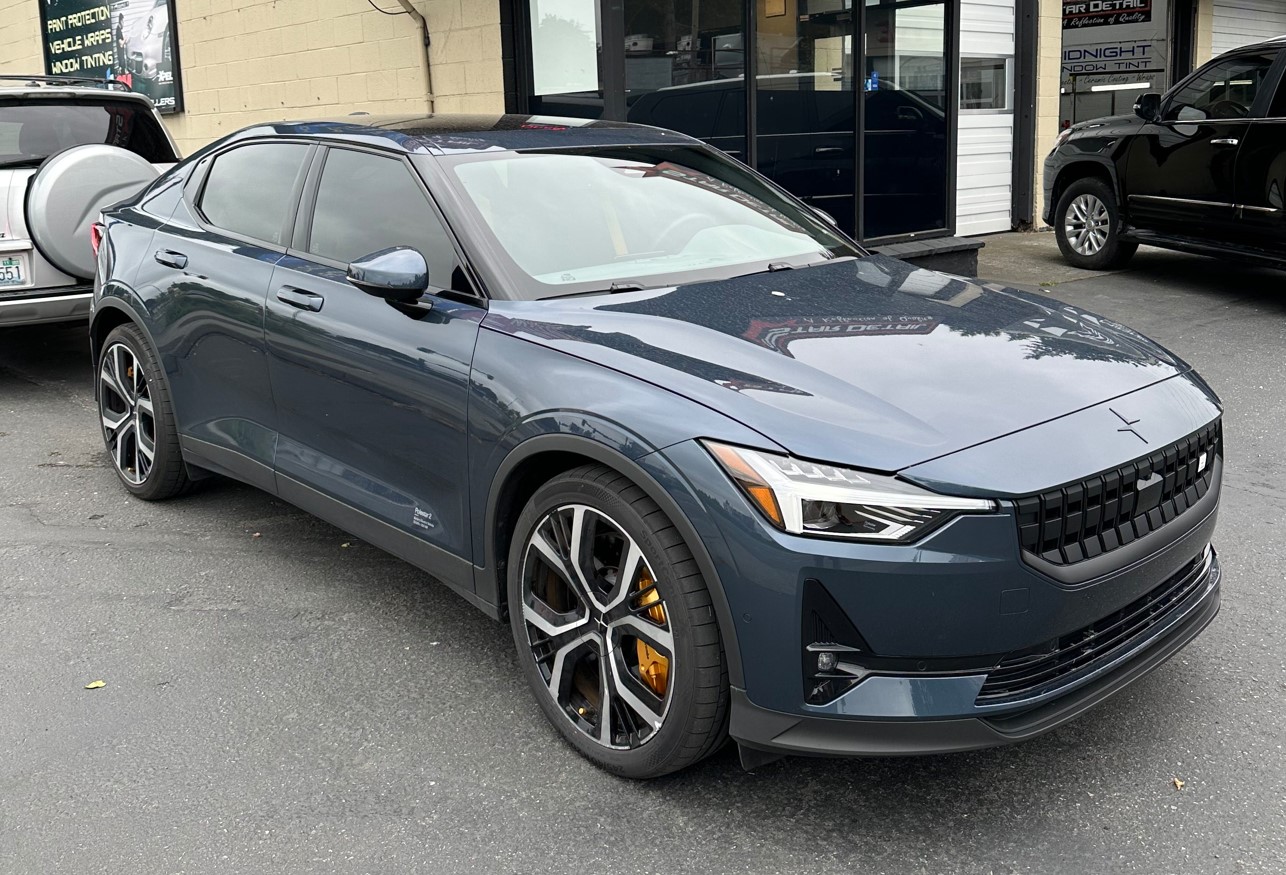
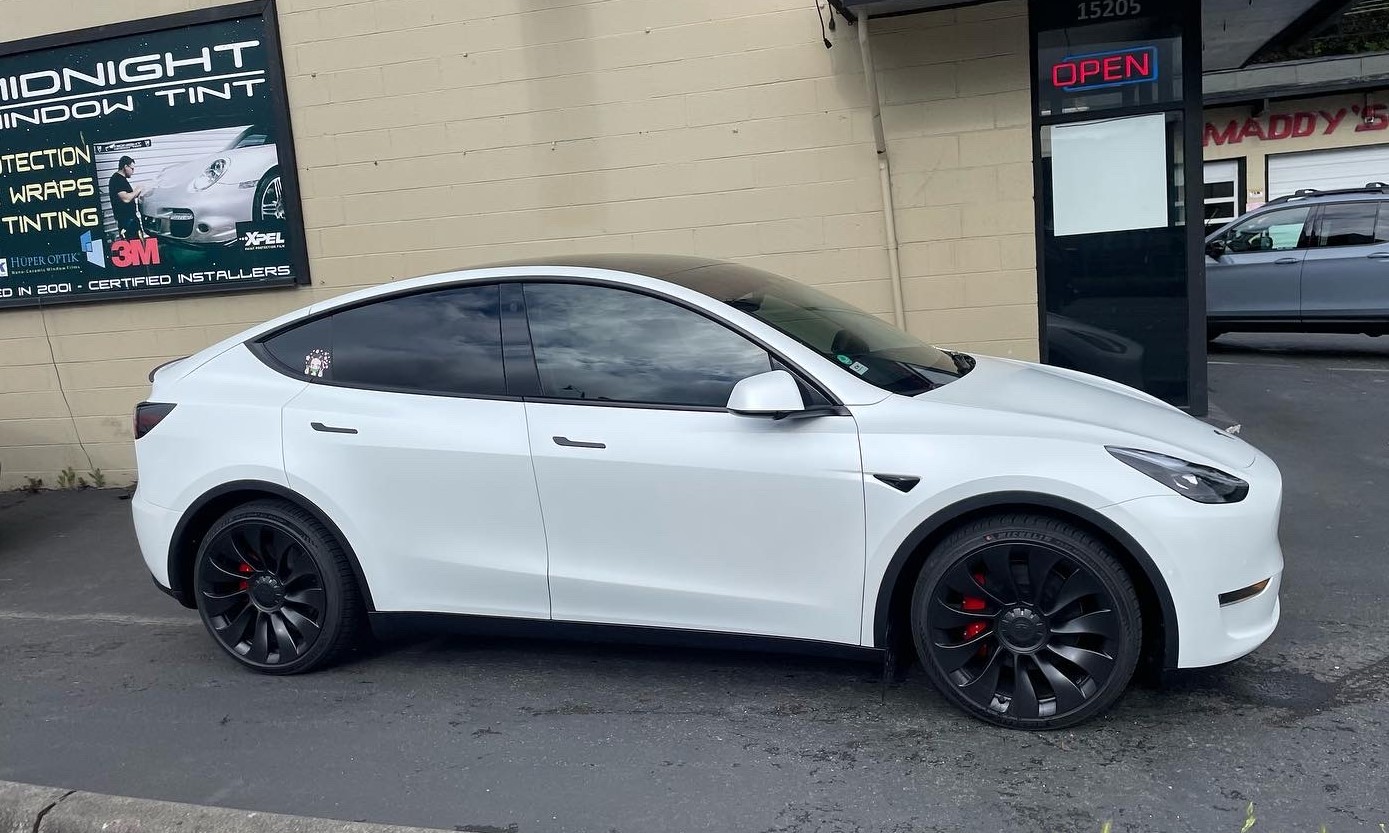
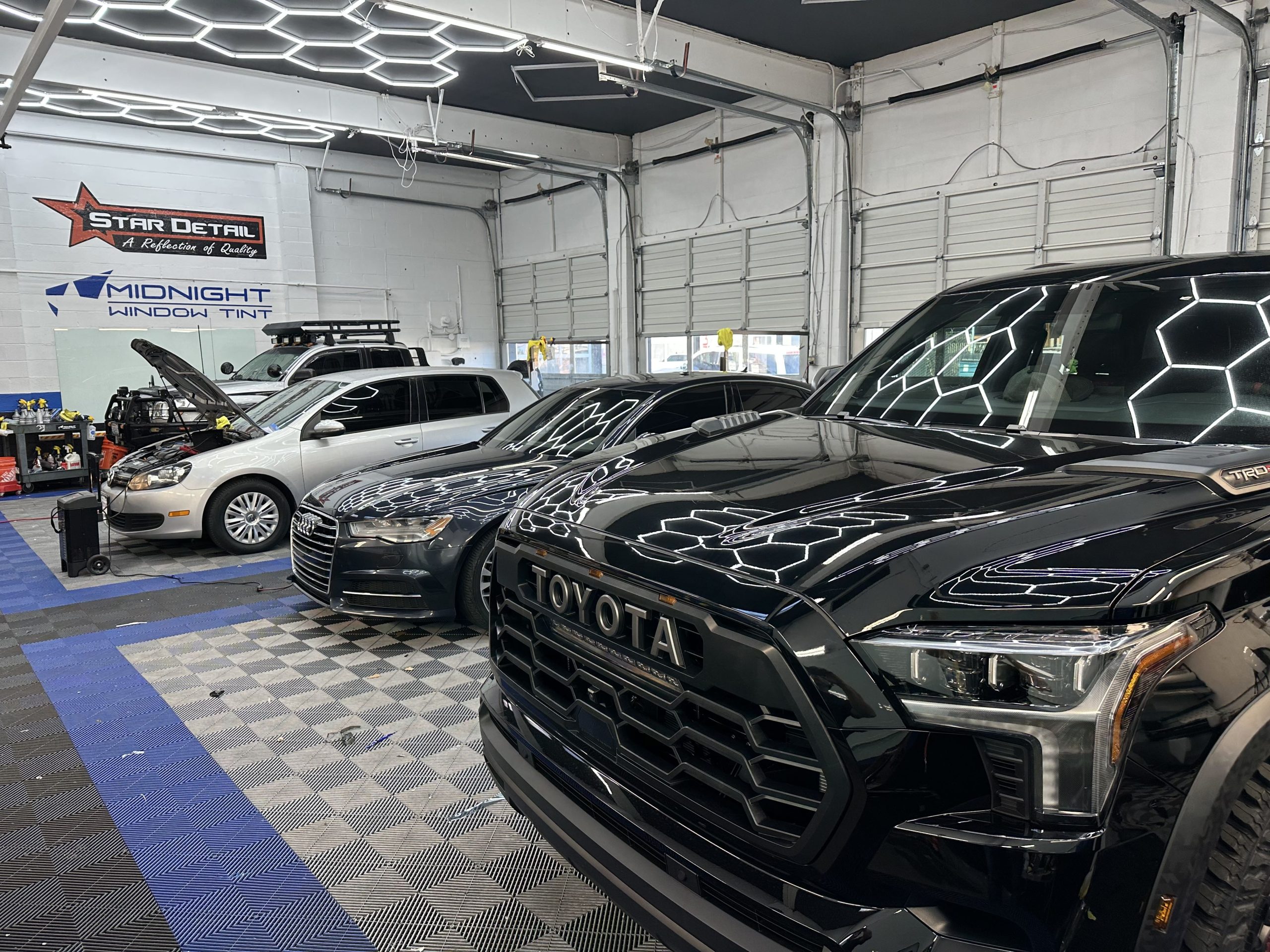
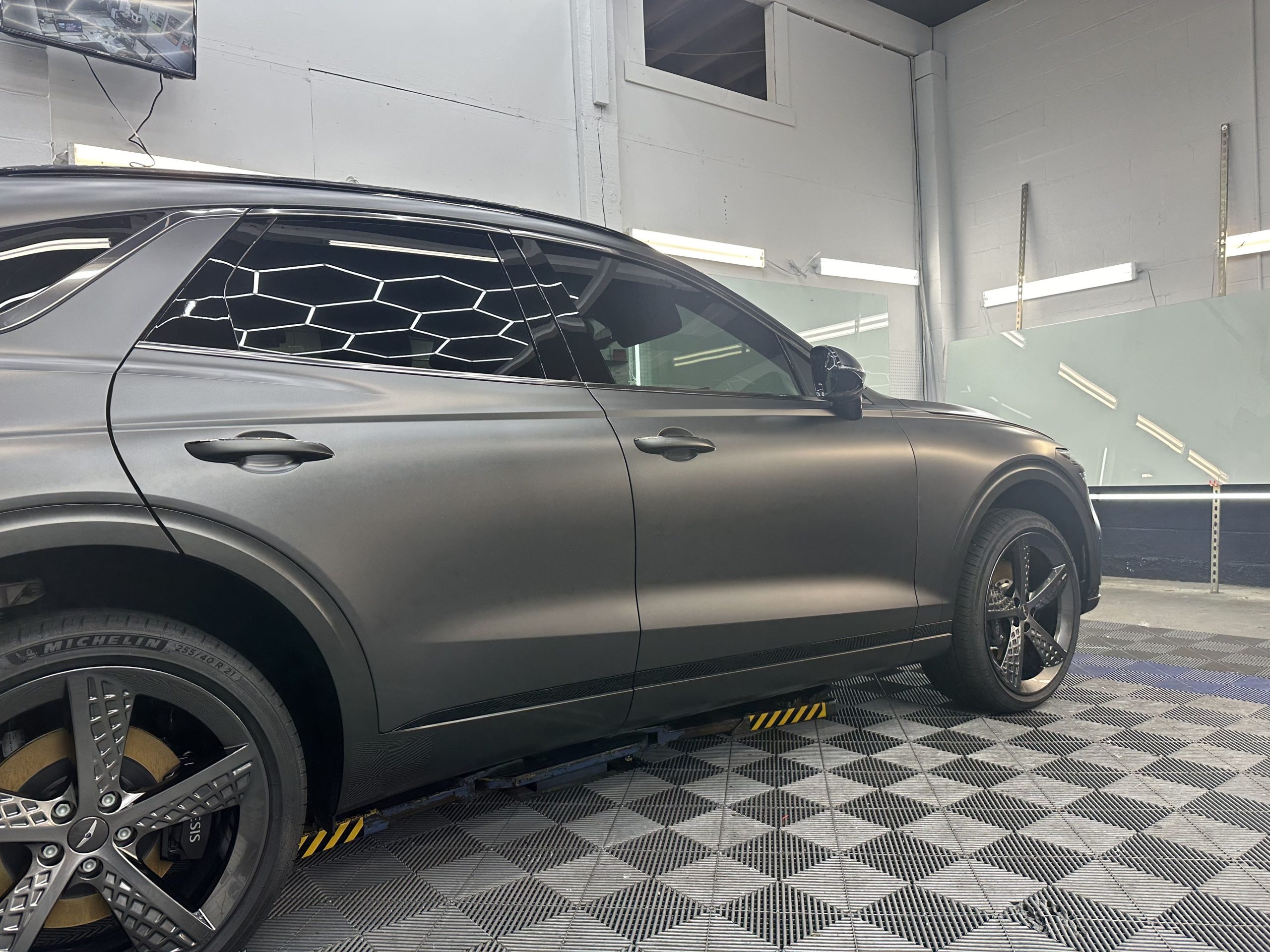
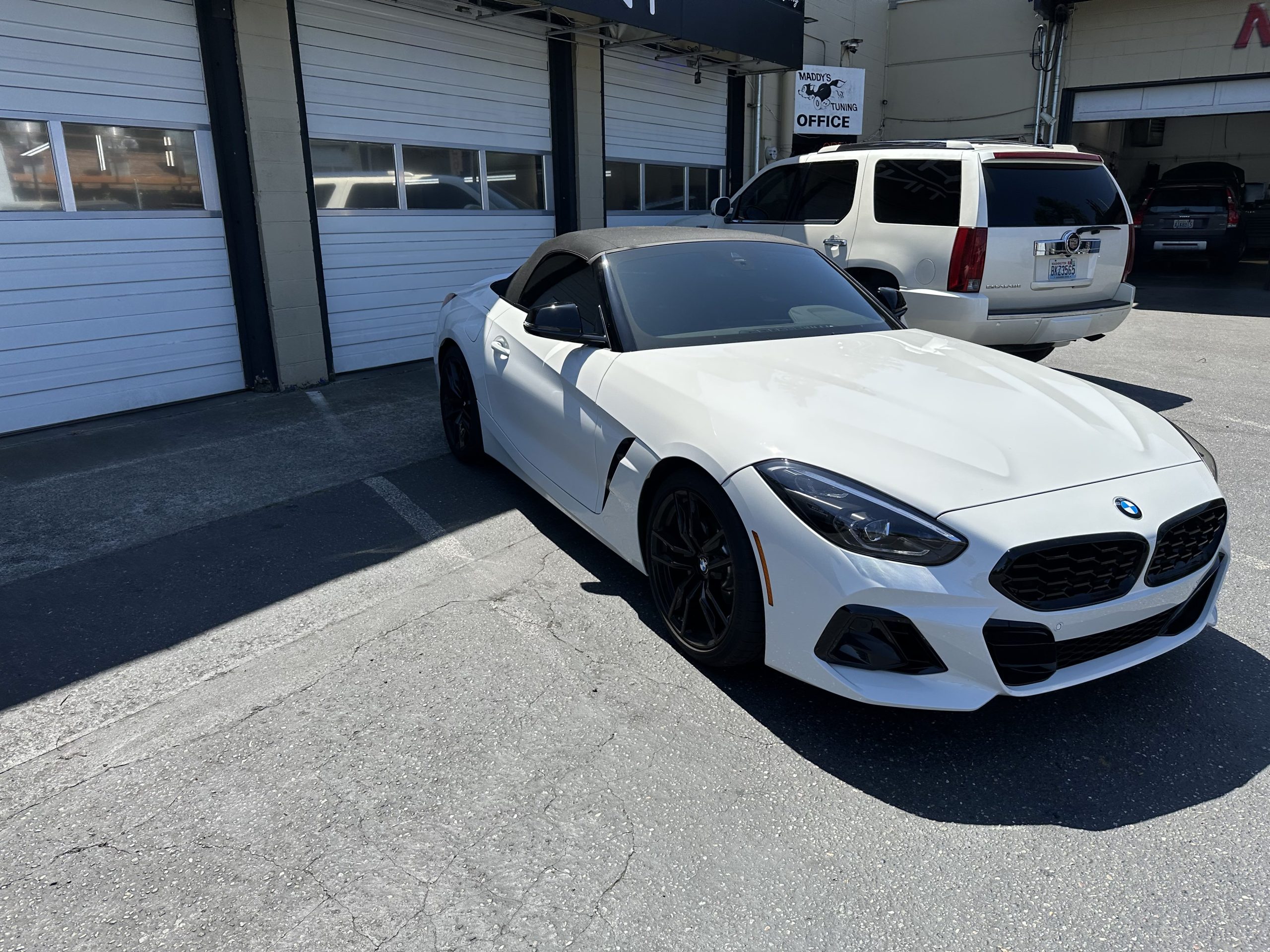
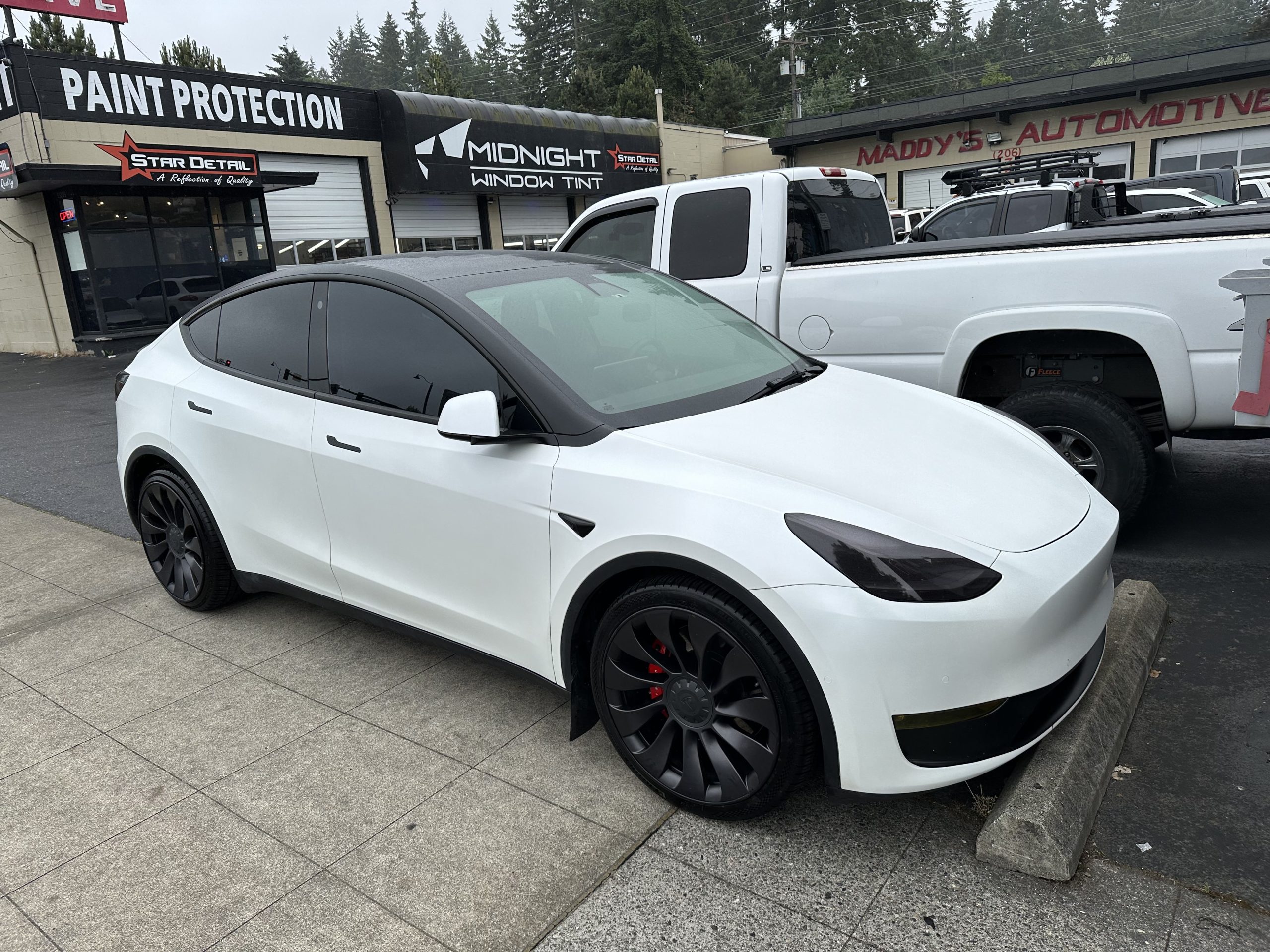
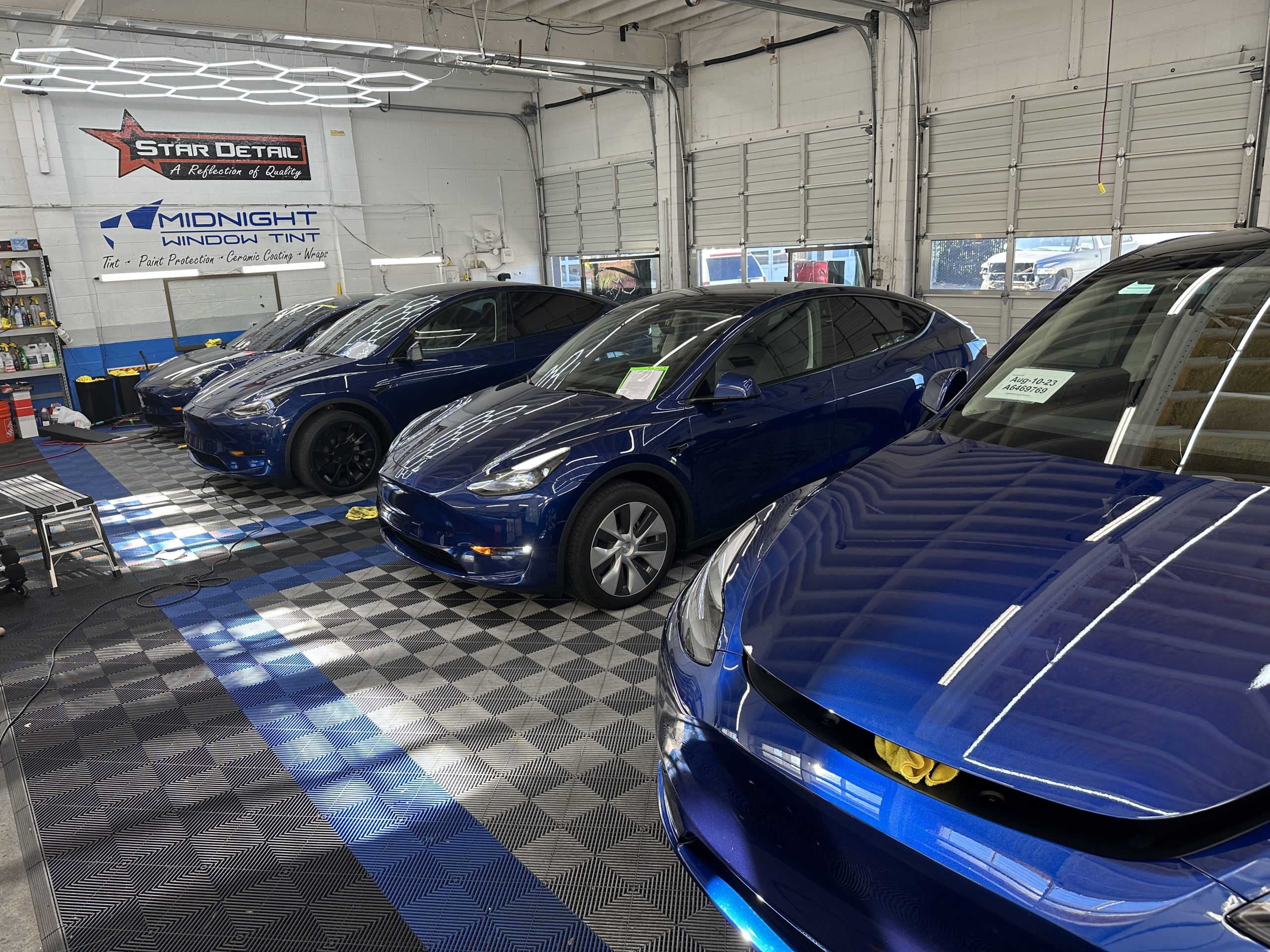
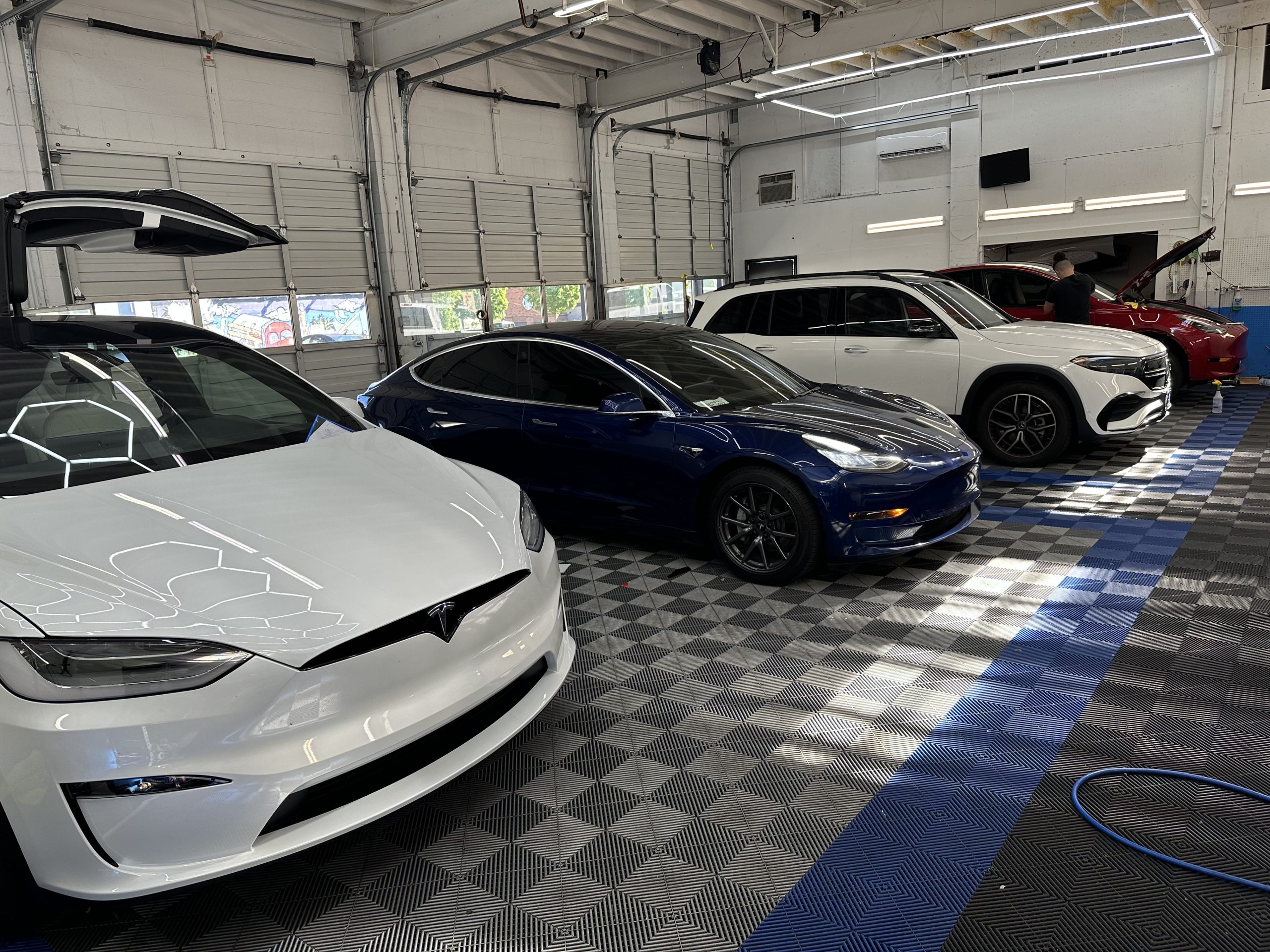
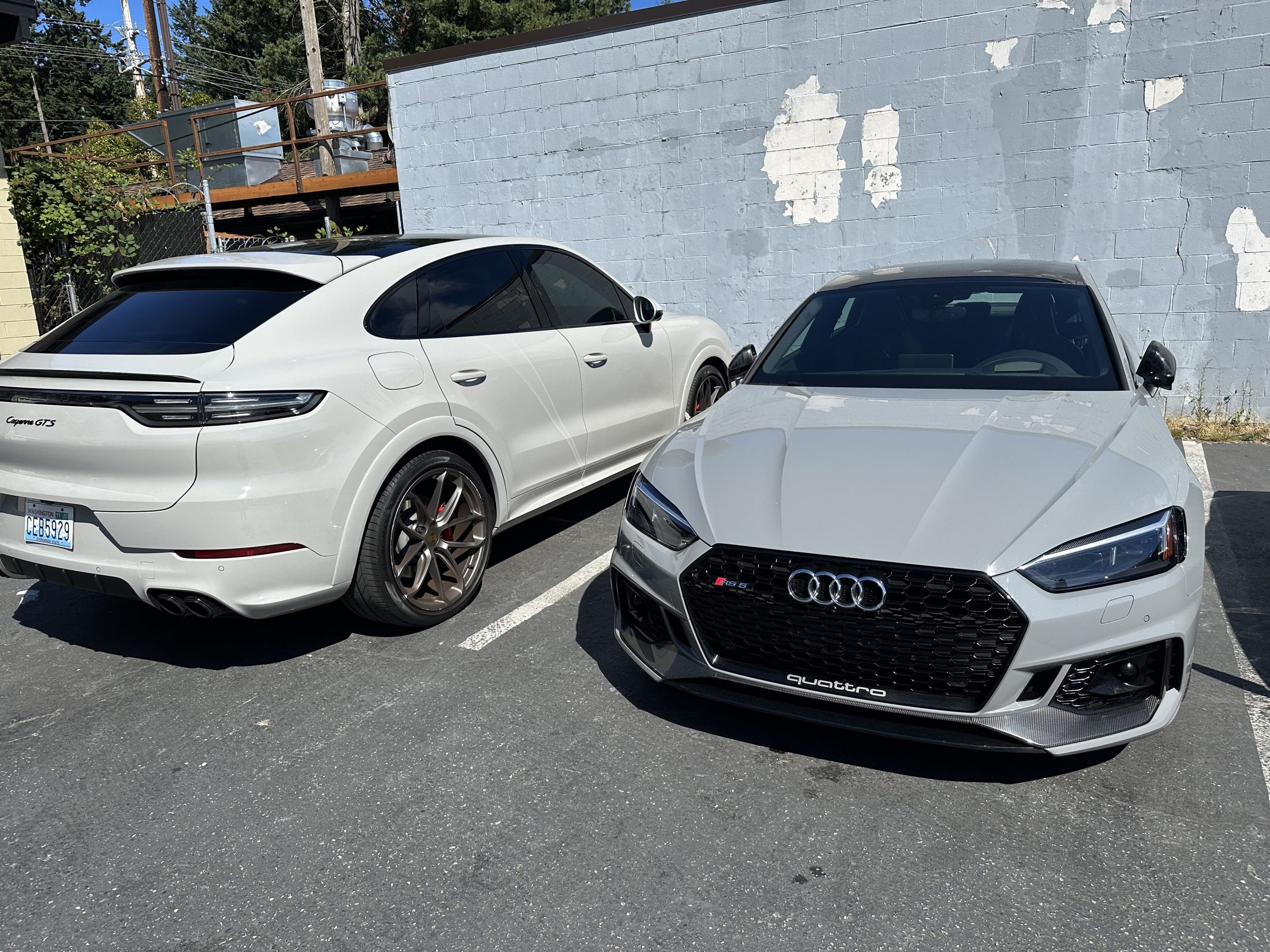
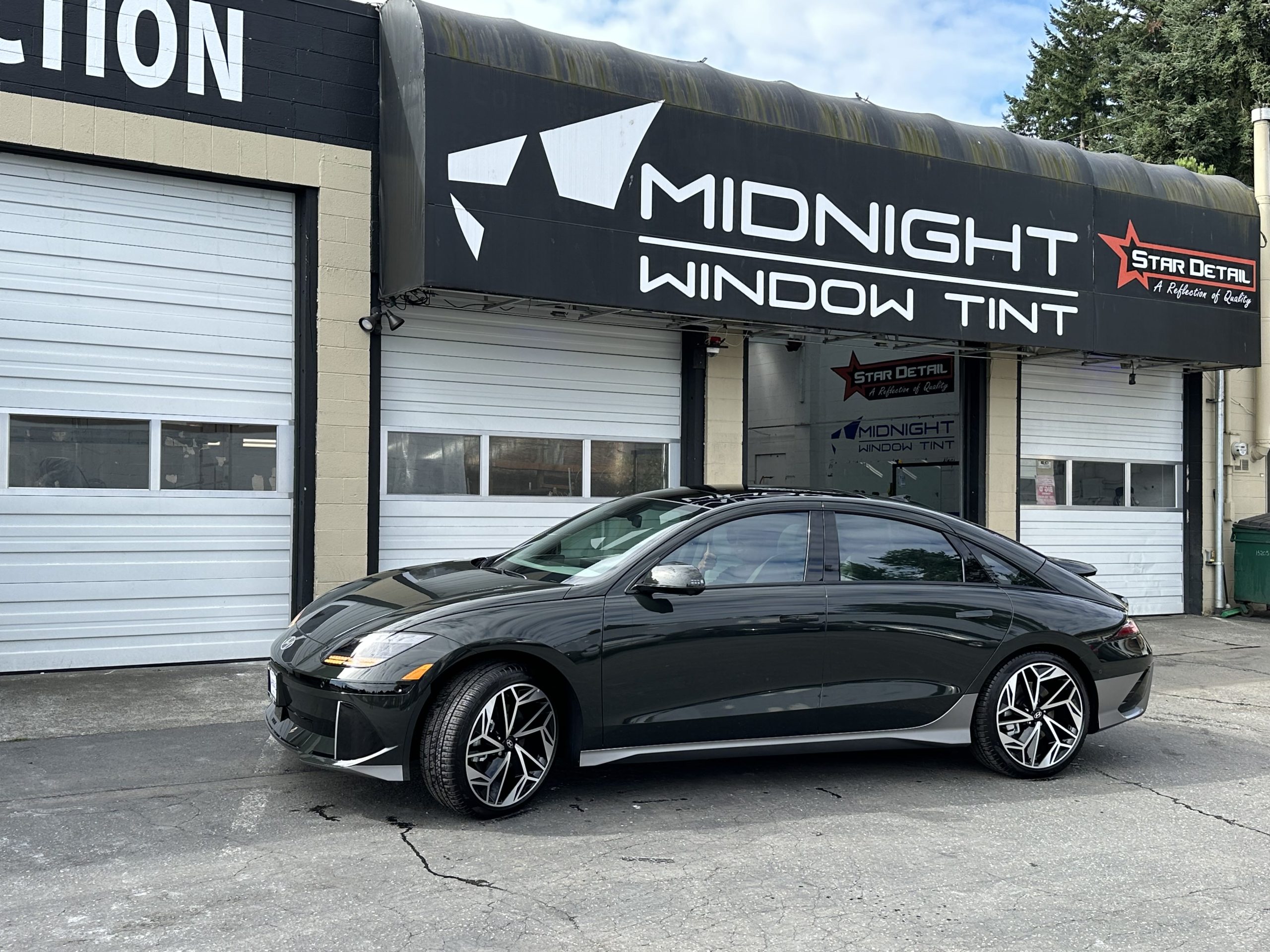
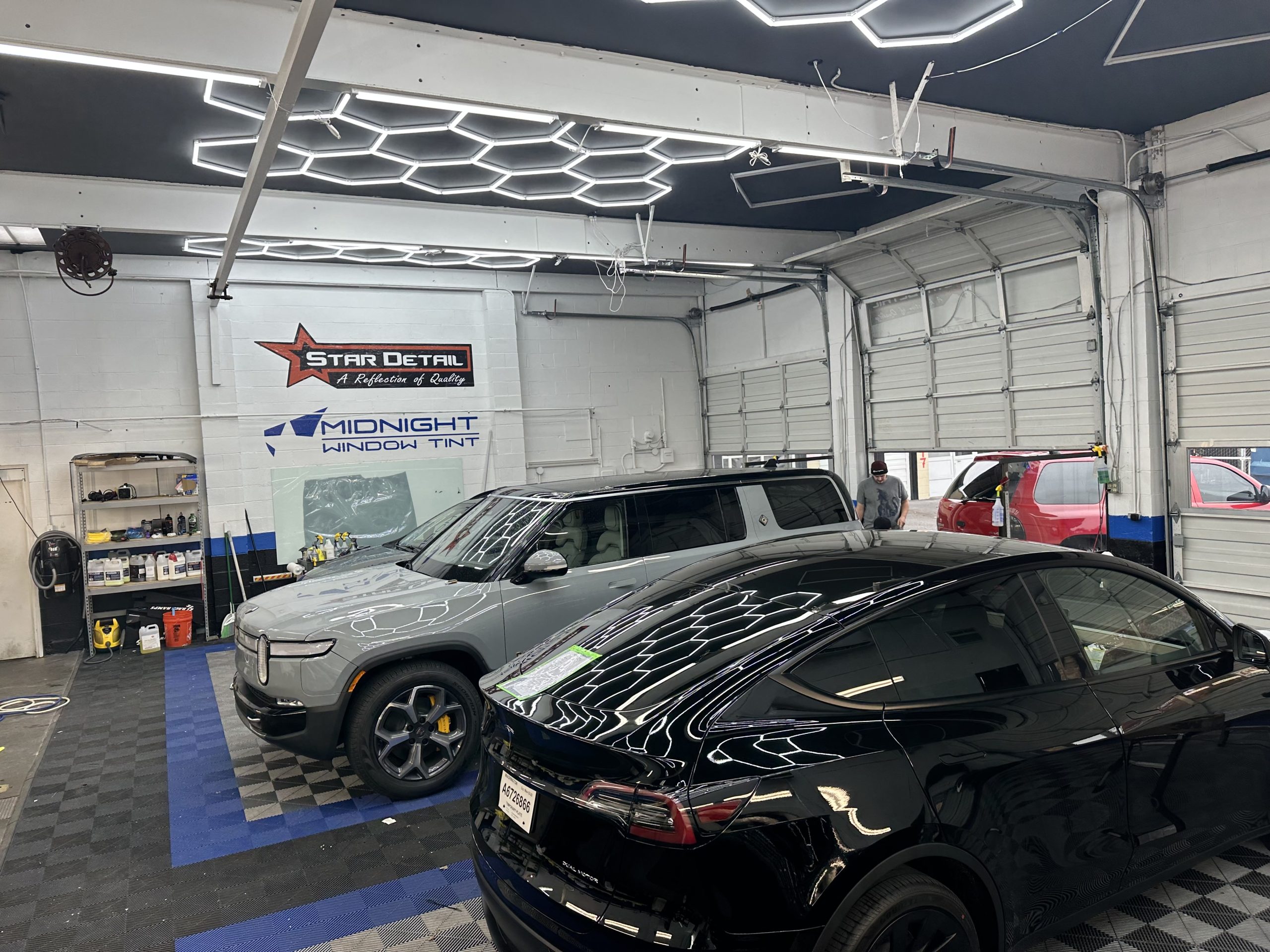
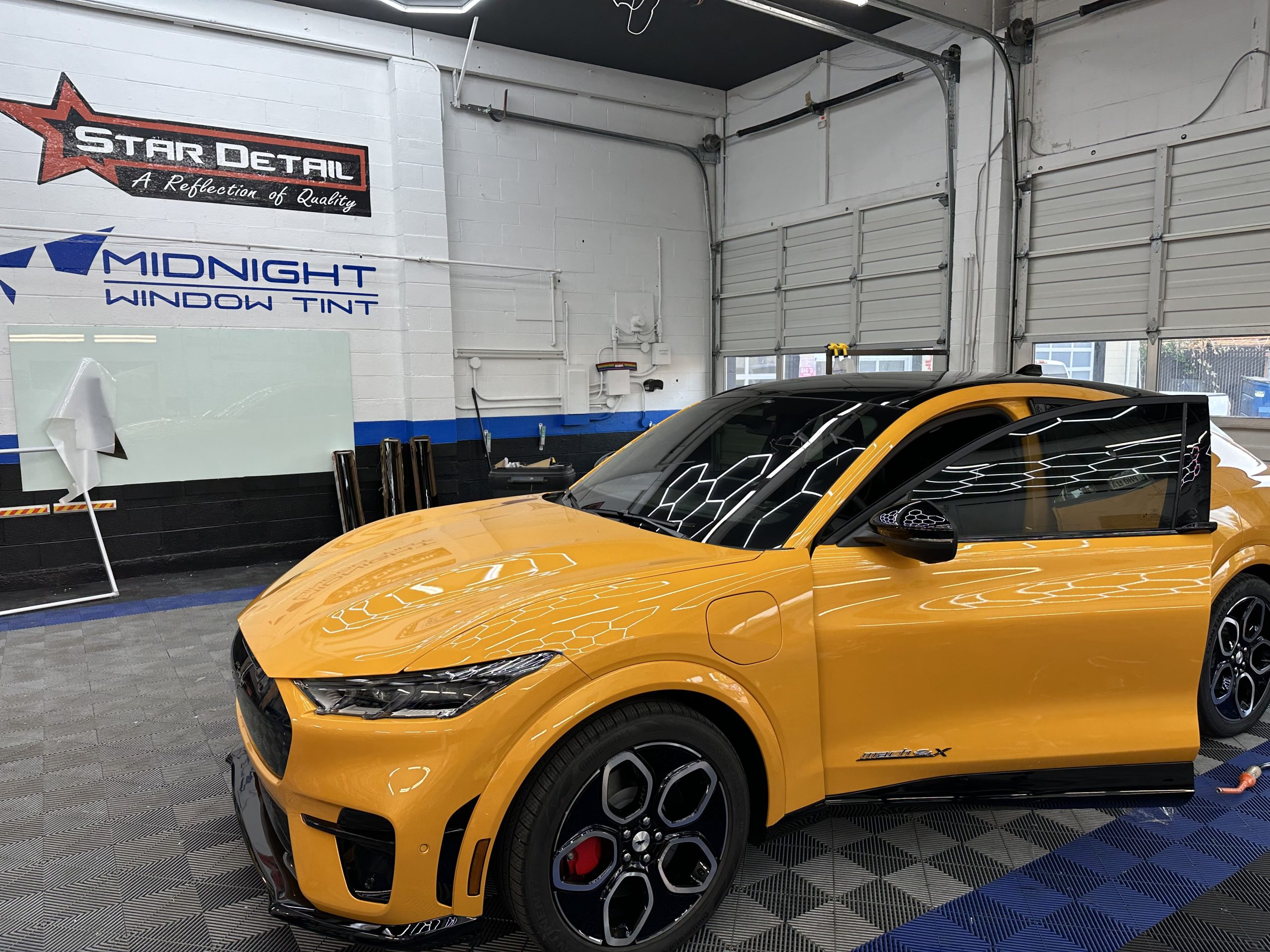
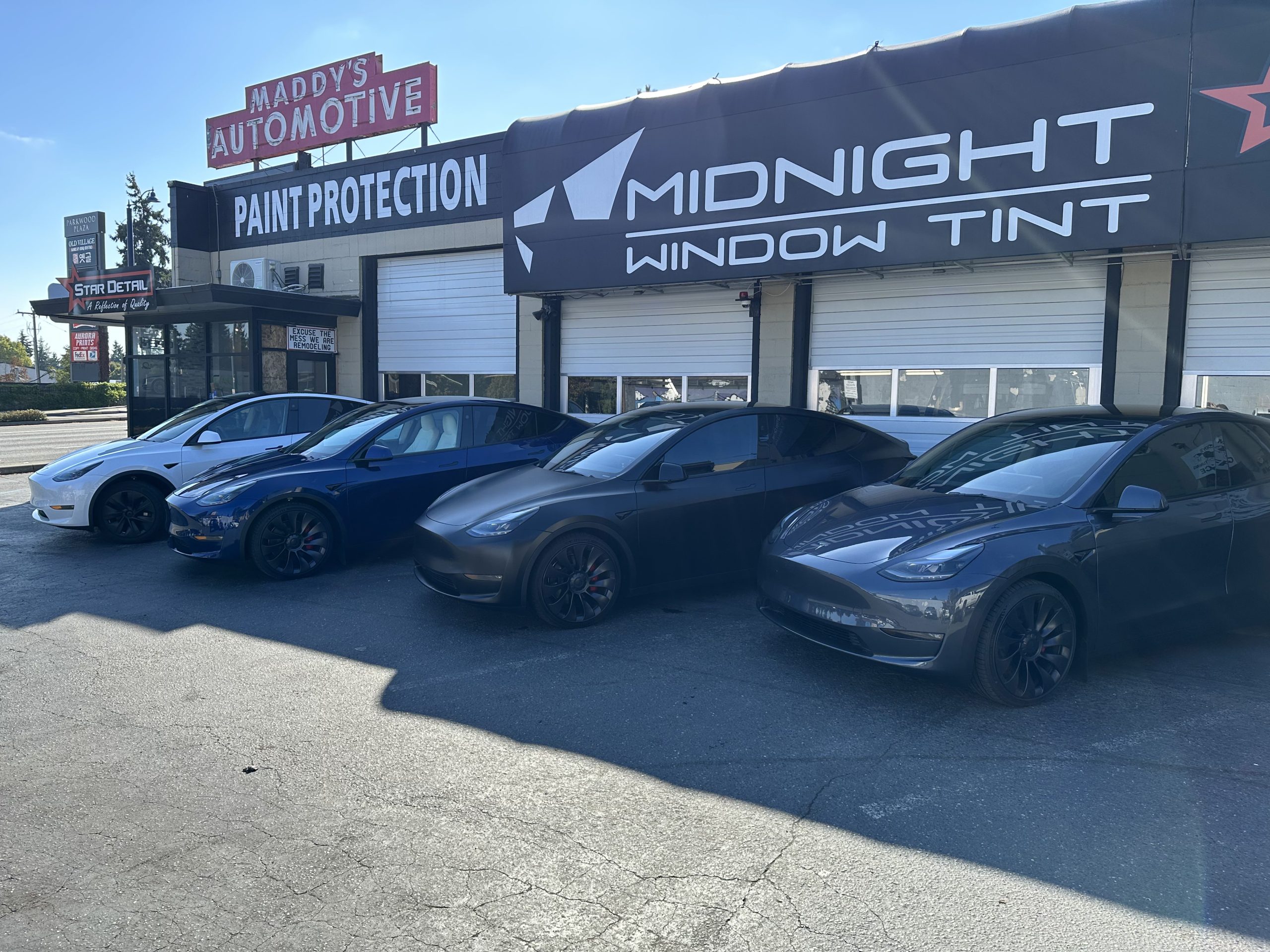
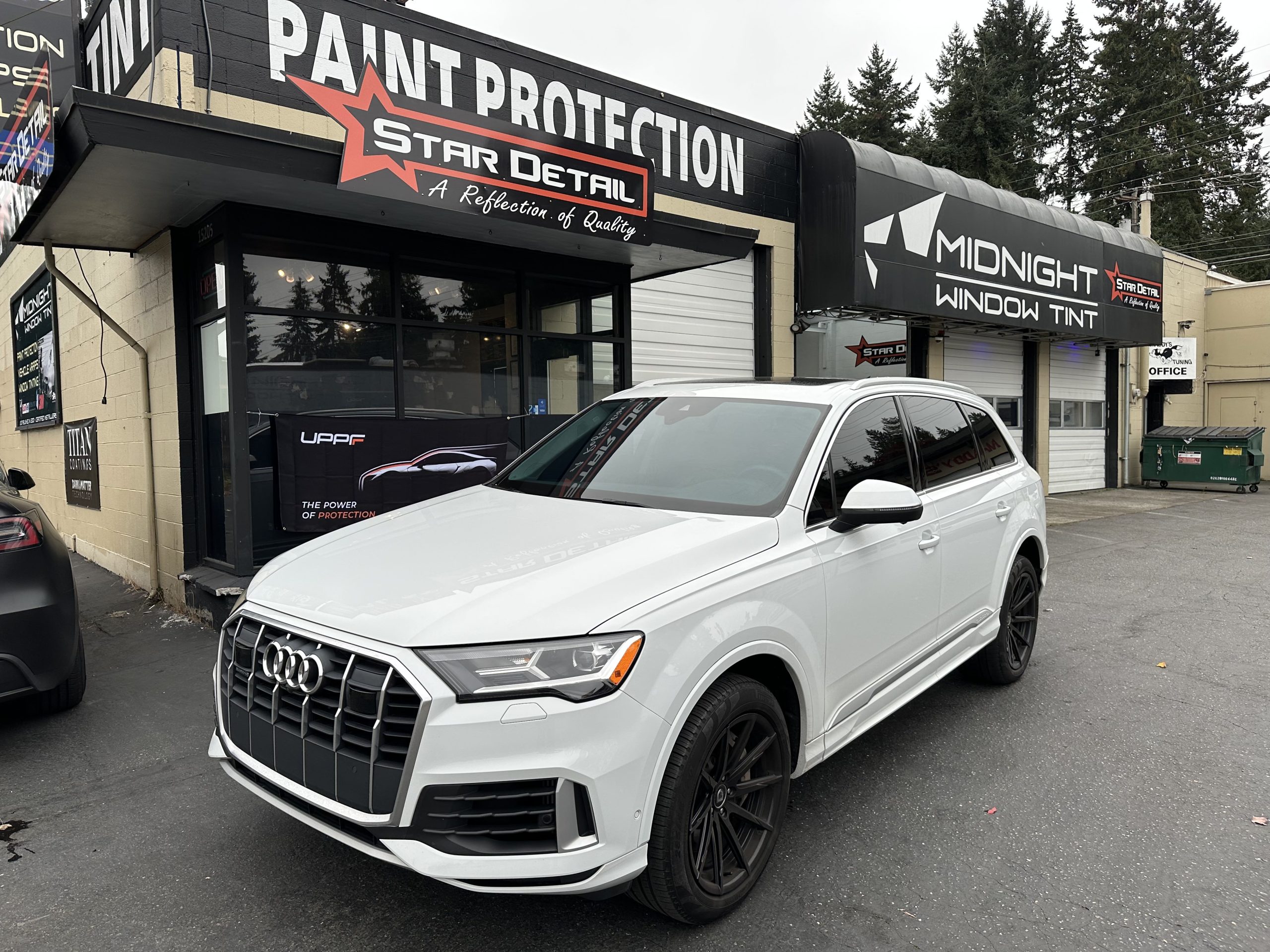
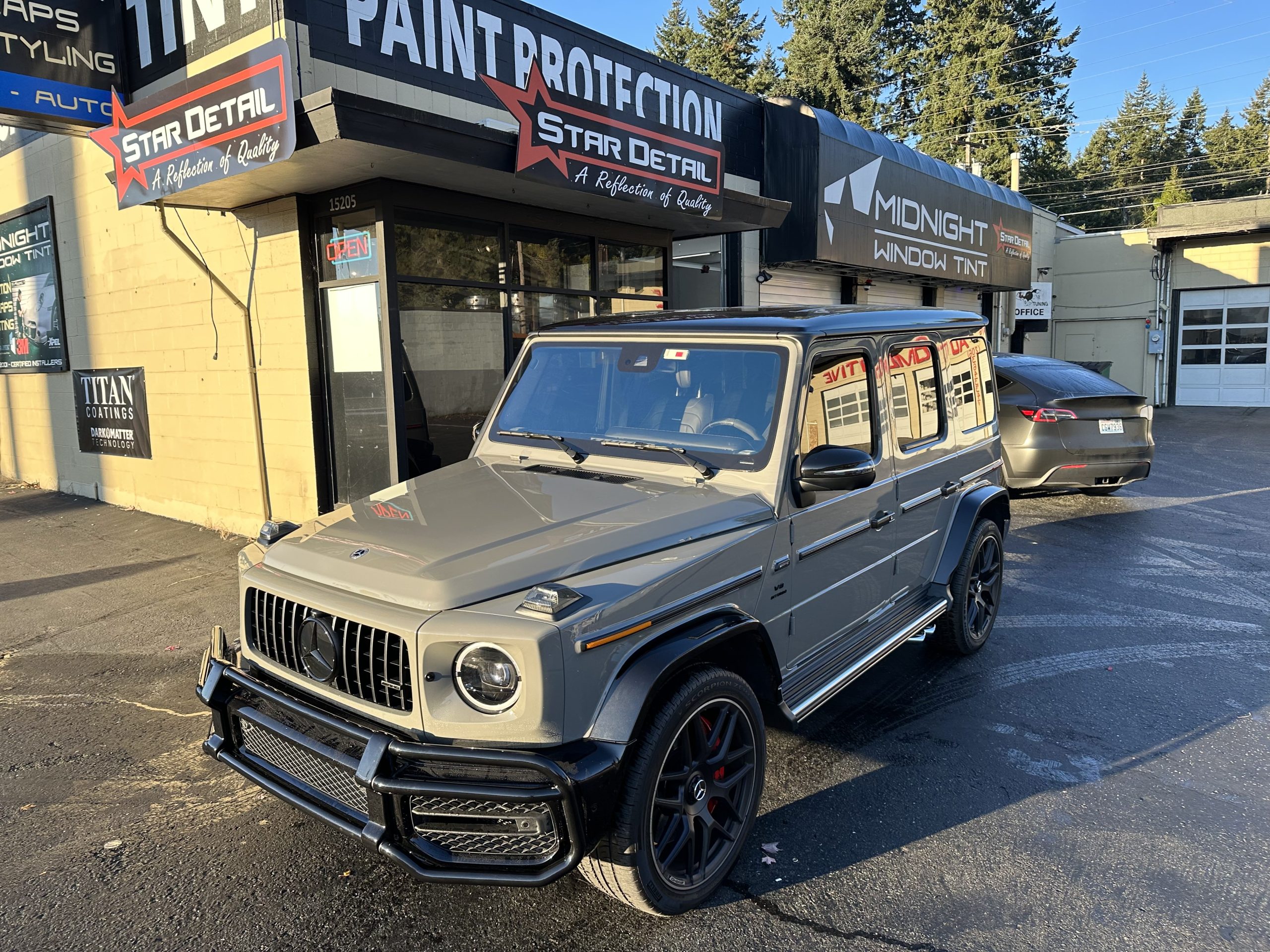
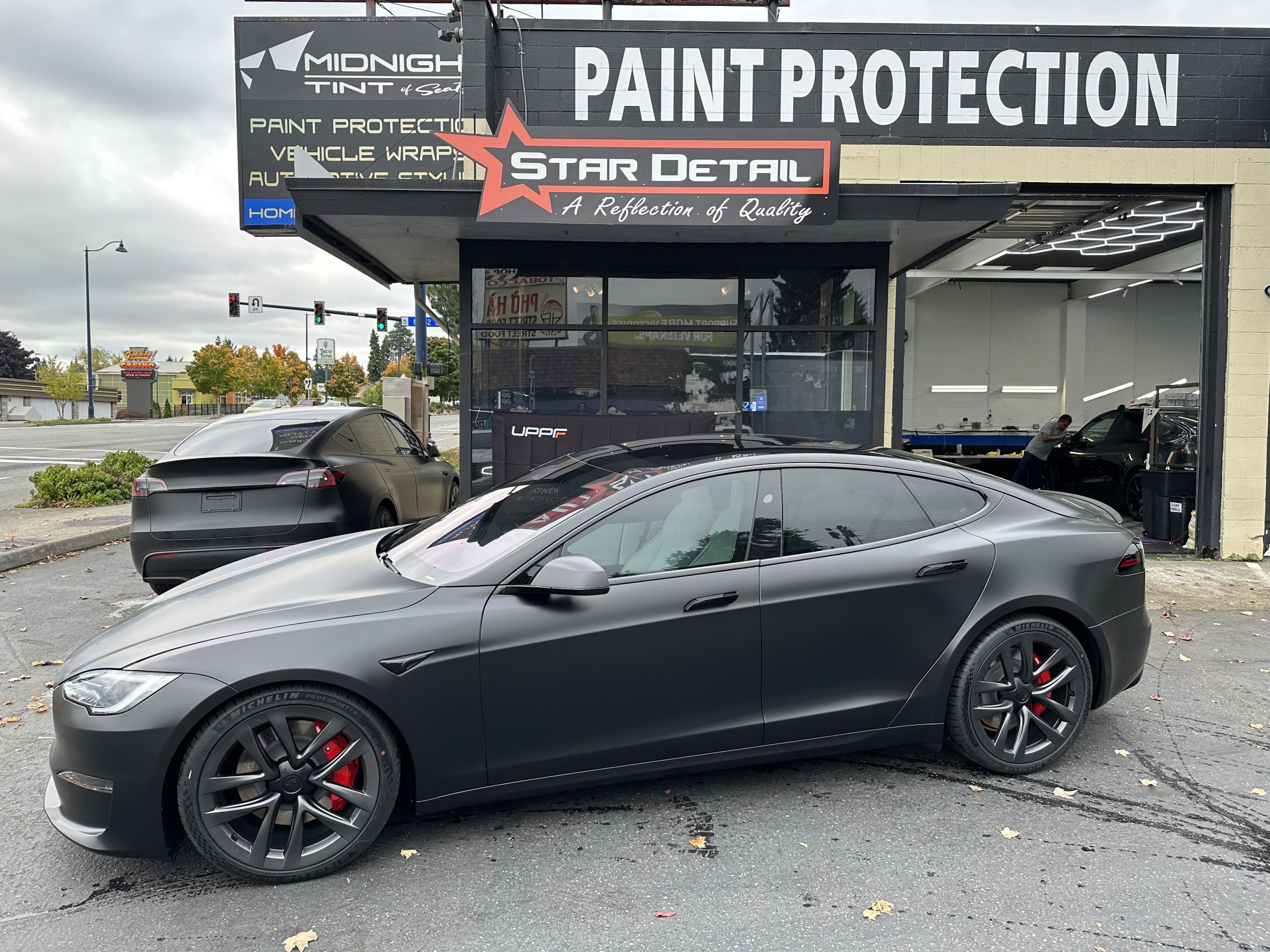
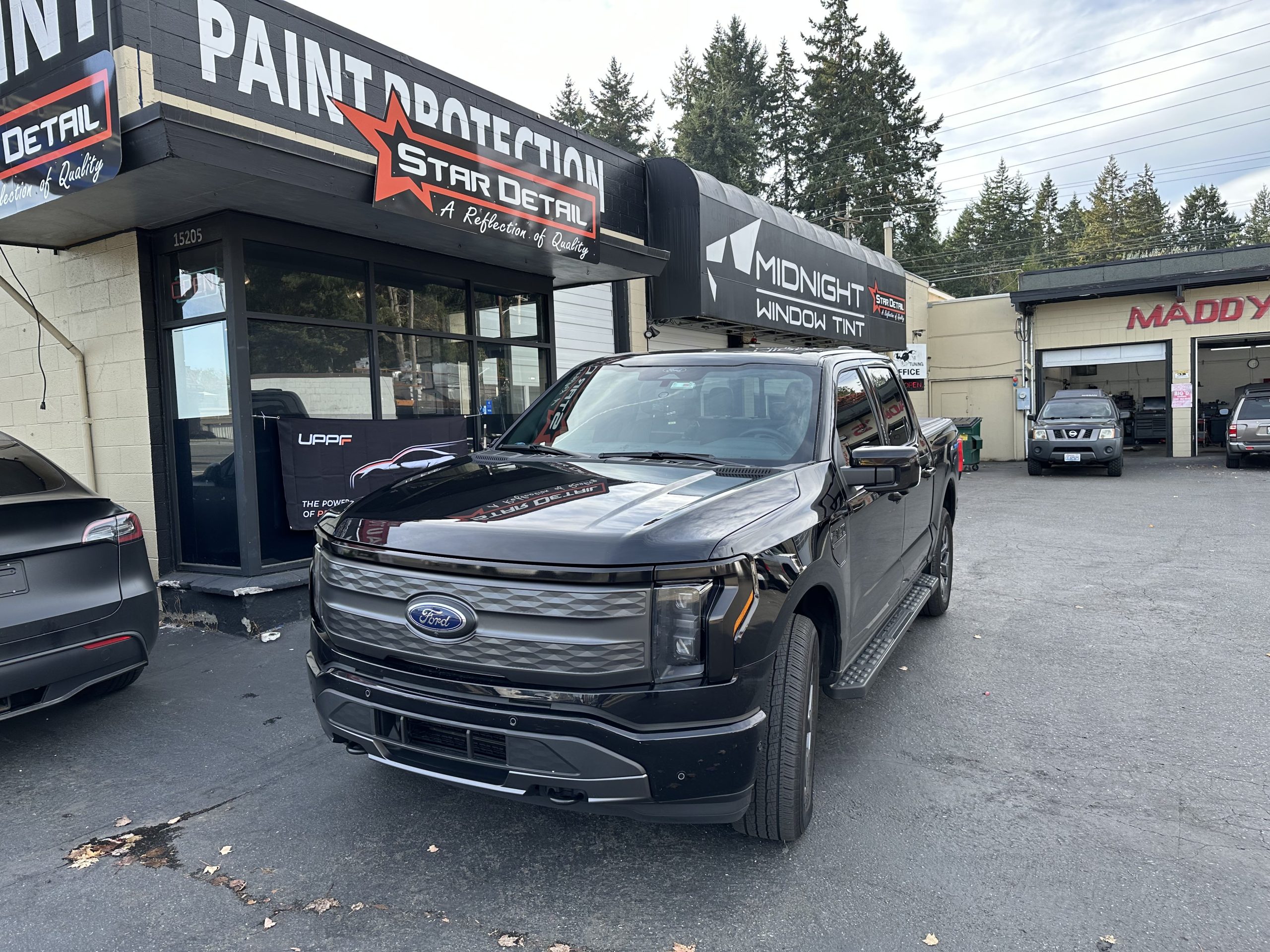
We are automotive tinting experts, having installed film on well over 1 million vehicles. Since 2001, Midnight Window Tinting has consistently outperformed the competition by offering only the finest products at the best possible prices, while also providing the highest quality installation available.
Over 1 million vehicles tinted and counting. Hundreds of 5 star reviews!
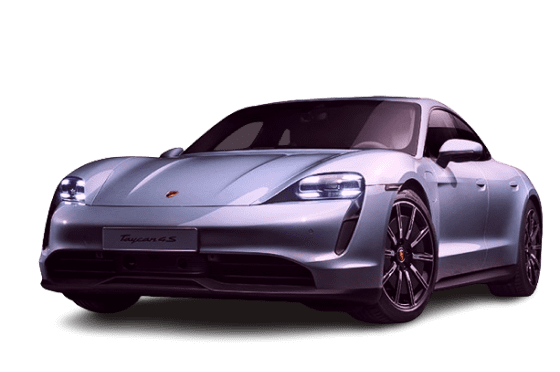



We all know how hot it can get when a car sits in the sun for an extended period. The solar control properties found in automotive window films can greatly reduce the level of heat gain inside a car, providing more comfort for the driver and passengers.
Additionally, this heat reduction will lead to better fuel efficiency because car owners can rely less on air conditioning to provide comfort.
The presence of glare while driving is not only distracting but dangerous as well.
Window film does an excellent job of minimizing the level of annoying glare entering a car window. This will improve vision and safety and help prevent strain on the eyes.
It has been proven that UV rays from the sun can cause serious damage to the skin and increase fading on interior car furnishings such as dashboards, seats, floor mats, and stereo equipment.
Automotive window films help reduce the level of interior fading and protect skin by blocking up to 99% of the sun’s harmful UV rays.
Window tinting provides an added layer of privacy by making it more difficult for outsiders to see inside the vehicle. This deters potential thieves and protects valuables inside the car.
Additionally, in the event of an accident, window film can help hold shattered glass together, enhancing the safety of the occupants.




















level 1
The autobahn Black line offers a sophisticated style through a blend of aesthetics and value in mind. Black is a color-stable deep-dyed film – second to none in color stable dye technology on the market.
Of course Black also causes no interference with radio frequencies or electronic control systems.

level 2
Built on proven nano-ceramic dispersion technology, autobahn Black Ceramic offers virtually no low-angle haze present in some other ‘large particle’ dispersion films as well as contains a blend of type and size of ceramics that provide broad-spectrum infrared rejection rather than a simple technology that may have high infrared rejection but only within a narrow bandwidth.

level 3
The latest innovation in Nano-Ceramic Technology! i3 Ceramic provides excellent heat rejection, color, and clarity.
i3 Ceramic is a multi-layer Ceramic and is backed by autobahn’s™ lifetime No-Hassle Warranty.

best protection
This cutting edge technology provides remarkable heat rejections performance and cool European styling.
Ceramic window film reduces glare to improve your driving visibility and reduces fading of your interior.

Windshield Skin® offers a revolutionary solution designed to protect your windshield from damage while maintaining perfect visibility. This innovative product is a transparent film applied to the exterior of your windshield, providing an invisible shield that defends against various hazards.
Guards against chips, cracks, and other damage caused by road debris, rocks, and harsh weather conditions. Absorbs impact, preventing costly repairs or replacements, ensuring your windshield remains intact and clear.
Provides UV protection, shielding your vehicle’s interior from the sun’s harmful effects. Preserves the appearance and longevity of your car’s interior and reduces heat and glare for added comfort.
Designed for durability and ease of application, Windshield Skin® maintains the structural integrity of your windshield, enhancing overall vehicle safety. A crucial component of your vehicle’s protection system, safeguarding your investment and providing peace of mind.
Perfect for personal vehicles and fleets, reducing operational costs by minimizing downtime and maintenance related to windshield damage. Experience the convenience and security of a clear, protected windshield with Windshield Skin®.
Darkness of tint is measured by Visible Light Transmission percentage (VLT%). In Washington,
this percentage refers to percentage of visible light allowed in through the combination of film
and the window.
Similar to sunglass lenses, some tinting film contain metallic elements that help in reflecting incoming light and reducing the glare and heat generated by visible light.
The tint color(s) of Red, Gold, Yellow, or Black, are not legal by state law, neither are mirror finish products or sprayed on products.
Dual side mirrors are required if back window is tinted.
Manufacturers of film need to certify the film they sell in the state. Ask your dealer if they are using ceritified film.
The sticker to identify legal tinting is required between the film & glass on the driver’s side window.
State allows medical exemptions for special tint. For more details
You may tint your vehicle to 24% VLT for the front doors of any SUV.
The back half can be any darkness you prefer. As for passenger vehicles,
you may tint up to 24% on all windows except the windshield.
All windshield tinting can only be tinted to a max of 6″ from the top or the as1 mark.
The article below is from the Washington State Patrol as of 2009. With this in mind,
we do offer an assortment of window film options, and can help guide you to a
film that fits your indvidual needs.
Darkness of tint is measured by Visible Light Transmission percentage (VLT%).
In Hawaii, this percentage refers to percentage of visible light allowed in through the combination of film
and the window.
Similar to sunglass lenses, some tinting film contain metallic elements that help in reflecting incoming
light and reducing the glare and heat generated by visible light.
No colors of tint are explicitly banned.
Dual side mirrors are required if back window is tinted.
Manufacturers of film do NOT need to certify the film they sell in the state.
No sticker to identify legal tinting is required.
State law does NOT allow medical exemptions that would allow you use special tint.